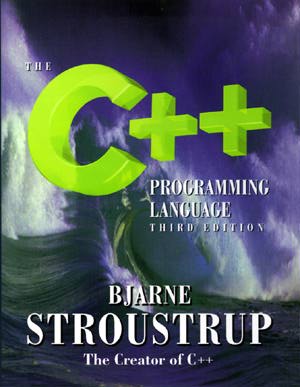

 |
|
Comparing the first and third editions of The C++ Programming Language provides insight into how the C++ language has grown and changed in the past decade. The third edition has almost three times the number of pages and a slightly different organization. Whereas the first edition included a 67-page language reference manual at the end, the third edition includes only a language grammar section to represent formal language definition. This is appropriate. The ANSI/ISO Standard document, which is now the formal language and library definition, is itself about 750 pages long. Stroustrup plans to publish The Annotated C++ Language Standard (coauthored by Andrew Koenig, the ANSI C++ committee's Project Editor) sometime this year.
The third edition takes a tutorial approach with many of Stroustrup's personal programming philosophies. The author's explanations of how he uses language features provide examples for learning the behavior of those features. He also explains code idioms that some programmers routinely use but that he finds inappropriate.
As much as possible, the third edition reflects Standard C++. When small language features are found to be missing, particularly new ones, Stroustrup pledges to add them to a future printing.
The book includes many code examples. There is no diskette or CD-ROM, because Stroustrup avoids a teaching approach wherein readers compile and run examples. His examples are mostly code fragments that demonstrate the points he makes and the issues he addresses. The code fragments are readable, meaningful, and neither frivolous nor cute, and since you do not compile them, you need not worry that your compiler does not fully support Standard C++. There are four parts to the body of the book: "Part I: Basic Facilities;" "Part II: Abstract Mechanisms;" "Part III: The Standard Library;" and "Part IV: Design Using C++." Even if you are already a seasoned C++ programmer, Part IV, which is a rewrite of several chapters from the second edition, is worth the price of the book. It describes Stroustrup's philosophies on the design and development cycle of a software project involving C++. In his words, Part IV aims "to bridge the gap between would-be language-independent design and programming that is myopically focused on details."
The three appendixes are: "A: The C++ Grammar;" "B: Compatibility;" and "C: Technicalities." Appendix B discusses the differences between C and C++ and explains how the languages have become more compatible over time. Some of this convergence results from changes being made to the C specification (double-slash comments and no implicit int, for example). The appendix also discusses the issues related to porting C++ code from older C++ implementations, advising that, where possible, you should use the latest implementation of a compiler so that newer features are available to you.
Appendix C is about technical details that a programmer faces that are not necessarily language issues. I particularly like the discussion on the problems associated with traditional multidimensioned arrays as compared to using STL containers to achieve the same result without the headaches.
This book is an essential addition to a C++ programmer's library. It is not for dummies, and it wouldn't be my first choice for an entry-level, self-help tutorial on C++ for beginning programmers. It is, however, an excellent textbook for programmers who are self-motivated and students who study under the watchful care of a skilled instructor. As an experienced C++ programmer, I find the book useful as a reference to language usage and behavior. The author invented the language and then stayed close to the standardization and innovation process for the duration, always maintaining a careful vigilance over the evolution of his brainchild. Consequently, this book serves, for those who do not care to pore over the ANSI/ISO document (or the promised annotated version), as the authority on the Standard C++ language, how it works, and how you should use it.
-- Al Stevens